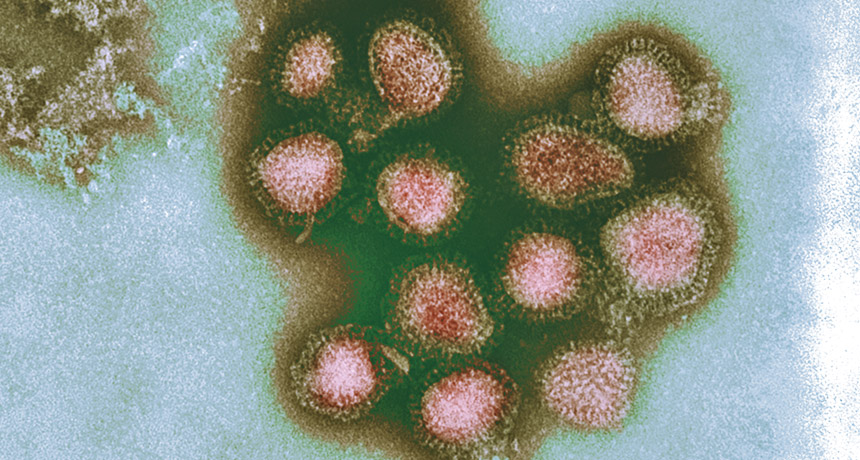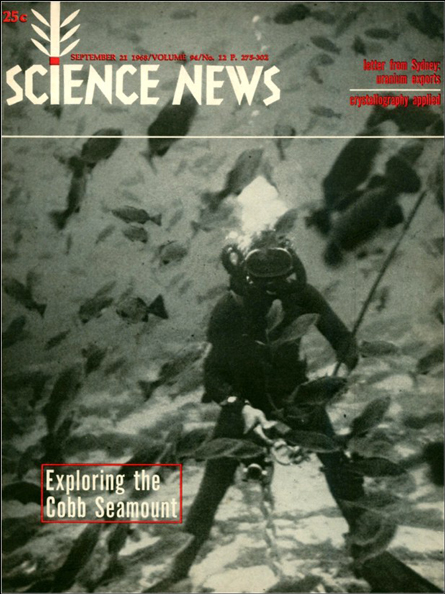50 years ago, a flu pandemic spurred vaccine research
Excerpt from the September 21, 1968 issue of Science News

MAKING THE ROUNDS The influenza strain responsible for the Hong Kong flu pandemic of 1968, called H3N2 (shown here in a colorized microscope image), was also responsible for 2017–18’s severe flu season.
Dr. Fred Murphy/CDC, adapted by E. Otwell
 Girding against a new strain
Girding against a new strain






